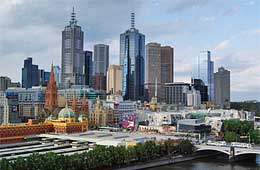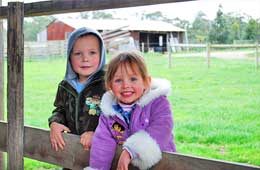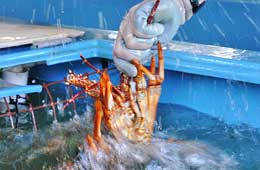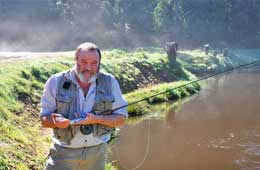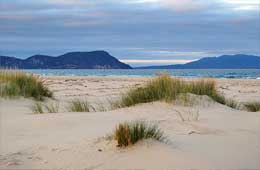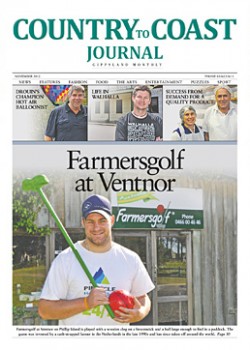Country to Coast Journal newspaper
THE psychological wounds our Vietnam War veterans carried due to the rejection they received when they returned from service in Vietnam, created a need 17 years later for some to band together and build a museum at San Remo to acknowledge for themselves, their service to Australia.
What began as a trailer with 200 items is now a large modern, fixed museum that houses 20,000 archived items. Ken Anderson, a veteran that served in Vietnam and a guide at the museum said they are all very proud of what they’ve achieved. He said it’s not a place with war gore or war bore but a place for learning and understanding their service in Vietnam.
“We started with a trailer behind a four-wheel drive and we visited schools. Then we moved into a garage in San Remo, which was pretty small but at least it was fixed. Later we moved into a group of shops that most people would have seen coming down the hill into San Remo. In 2000, we bought the land that we are now sitting on at Newhaven and built the present museum ourselves. We started building in 2002 and it was opened in 2007 by the premier Steve Bracks.”
Ken has been a volunteer at the museum for 10 years. “We have a group identity where there’s no real hierarchy or structure and we do everything without pay,” he said.
“When we started, the majority of us were Vietnam War veterans but of course we are a non-renewable product. It’s now 40 years ago since any of us were in Vietnam so we are starting to get non-veteran volunteers. They are the future and we train them really well because there’s a credibility factor. If a visitor asks a question, we have to give them the right answer.”
The Vietnam Veteran’s War Museum at Newhaven now receives around 20,000 visitors a year. “We are very well supported by bus tours, particularly with mature age clubs and schools,” he said. “Of course, Phillip Island is one of the premier holiday spots so during the summer months when the weather isn’t good, the tourists leave the beaches and come here.”
Ken said the items housed in the museum are either donated, purchased, on loan from other museums or obtained from the government. “We have to approach the government on a case by case basis. We can say we’ve got this and we’ve got the opportunity to get that and more often than not if we make a contributory effort the government may do so as well.”
He said the museum is very important. “The very reason we exist is due to the reception we got when we returned home from Vietnam. It was dismal and it took a long time to sort out. There was much to be addressed at both government level and public level. That’s why we only started the museum 17 years ago. We don’t believe anything like that will occur again but while there is a chance, the museum serves as a gentle reminder.
“I believe there were two reasons for the reception we did get. One was that the Vietnam War was the first to be televised and it was fought in lounge rooms all over the world. Families at home were more up to date with what was happening than the soldier on the ground who could only see a few metres either side of him. I also think national service played a big part and people saw us as an instrument of government, which the armed forces are of course, but not the individuals that form part of it, so to take it out on us was not right.”
He said each week during the war when troops came home, it was always in the early hours of the morning to avoid public rebuff. “It was usually freezing cold and the only people that would be there would be our own family. We weren’t allowed to wear our uniforms and any medals that soldiers were awarded came to them afterwards in plain envelopes.
“It was also difficult at that time for servicemen to become part of society again because in the 60s men wore longer hair and bell bottom pants, so when anyone saw a fit young fella as brown as a berry with a crew cut they knew he was a serviceman.
“Now when troops come home from Afghanistan they are officially welcomed by government dignitaries, handed any awards and told well done and that’s how it should be. Casualties come home with full military honour but in our day, they came home without ceremony. At the time we felt rejected by everybody; our people, our government and even our service community, so we decided to look after ourselves and I believe the museum we have built in remembrance will outlive the Vietnam veterans.”
He said the war in Vietnam went for 10 years and conscription was in for the last seven. “It was based on young Australian men having their 20th birthday who were then registered and the conscription marbles would then draw the day they would go. During the seven years we had national service 600,000 turned 20 and using the marble system 60,000 were drawn. Out of that 60,000, 15,000 went away while the other 45,000 served in Australia, and for every national servicemen serving in Vietnam there were four or five regular personnel.
The recruited men were then trained for a year before they went so they were 21 and 22 when they came home. Guys that were conscripted served alongside regular soldiers and there was no distinction amongst them. They all fought for one another and the situation created bonds between them that you won’t find anywhere else, and those relationships still exist 40 years down the track. Today the National Service Association is very strong and they look after one another well.”
The marbles used for conscription are now housed in the museum. It’s exciting to have that display,” Ken said. “National serviceman can look at it and say ‘oh that’s how my name came out’ and others look at it and say ‘if I had been born a day earlier I would have had to go.”
Ken wasn’t conscripted. He joined the army in 1952 at the age of 18. He served as a regular soldier in Malaya, Borneo and Singapore. He left for Vietnam as a captain in 1968 with two days notice and served there for 401 days. He said he returned in 1969 the day man landed on the moon and soldiered on until he retired in 1987 as a colonel.
“Vietnam was the first of the new style of war. I guess Korea was the last one with a front line and if you were behind the lines, you were pretty safe. With Vietnam as with Afghanistan today there are no lines so if you are a cook you are in just as much danger as an infantryman. In Vietnam you couldn’t tell who the enemy was so war is different now.”
He said the Vietnamese people however, including the enemy held the Australian forces that served in Vietnam in very high regard. “We were known to them as Uc dailoi. Uc is the name of Australia on a Vietnamese map and dailoi means from the south. Many people including our own soldiers thought it meant kangaroo because many of our vehicles and aircraft had a big red kangaroo on them. The Vietnamese referred to them as big red rats because they don’t have a word for kangaroo but wherever we turned up kids would point and say ‘Uc dailoi’ meaning it must be Australian and many thought they were pointing at the kangaroo.”
Since the war, Ken has visited Vietnam many times. “It’s a wonderful country,” he said, “particularly now. We couldn’t go back there for 20 years and in that time everything has changed. What used to be tracks are roads, what used to be roads are highways and highways are now freeways. Villages have become towns, towns have become cities, and many people have been born since. It’s nothing like the war zone it was where gunfire could be heard every minute of every day.”
He said: “If as Australian servicemen we had been able to come home, be welcomed, our service acknowledged and then be allowed to go home to our families, this museum would never had existed. The Vietnam Veteran’s Association of Australia would not have existed also, but time heals all wounds and there has been closure now, and I believe it’s sufficient for it not to happen again.”
By Wendy Morriss
Copyright © 2012 Wendy Morriss: Freelance Journalist. All Rights Reserved.
